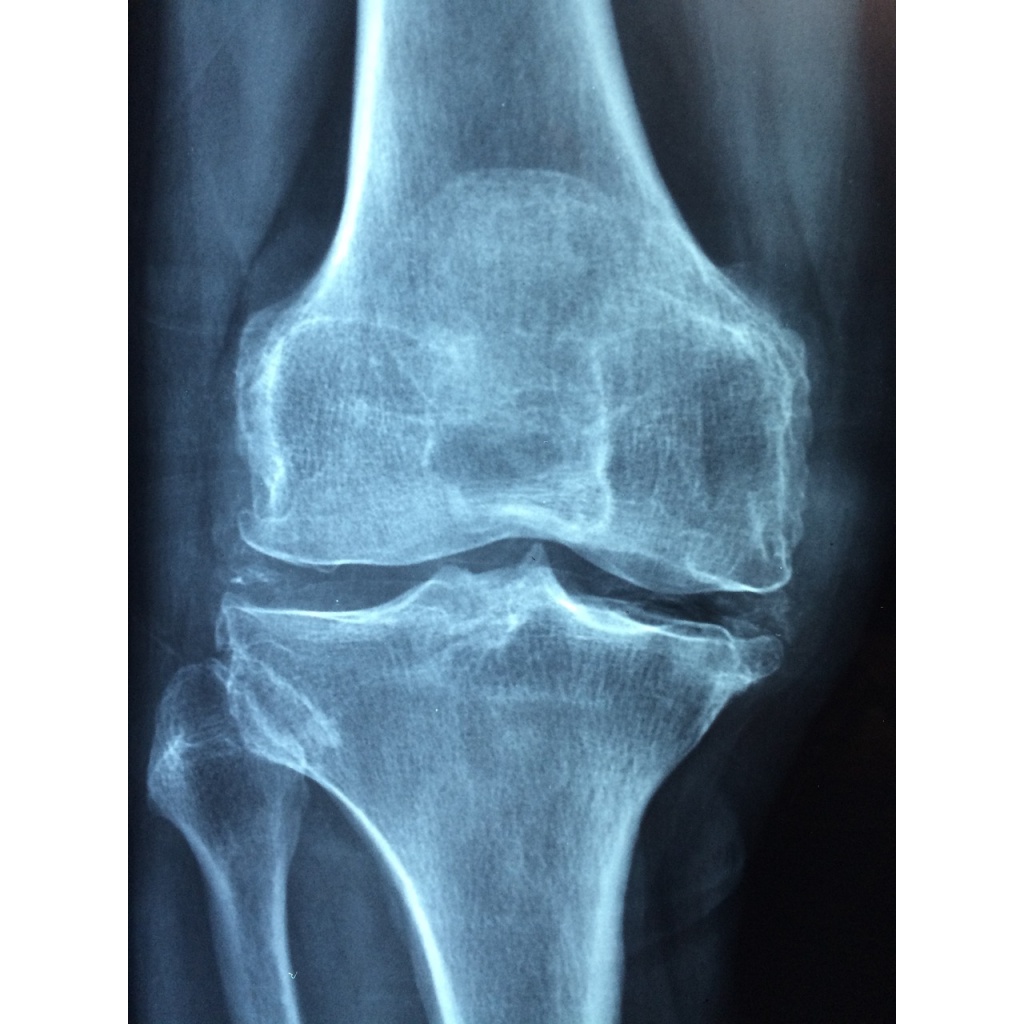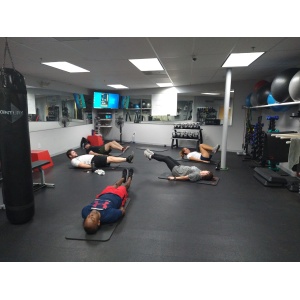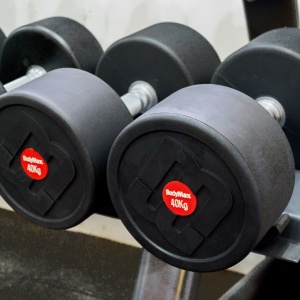Does weight training affect our joint health over time?
Fitness · Health · Nov 02, 2021
Weight training offers a myriad of health benefits – but there are concerns regarding the long-term effects of weight training on joint health. How valid are these concerns? We’ve taken it upon ourselves to look into the scientific findings around weight training and its effects on joint health to find out (as we tend to do!)!
Read on to understand what happens to our joints during weight training and the possible reasons behind joint damage, along with ways to prevent it.
What does a joint look like and how does it function?
Our joints are actually made up of a number of elements. Let’s see what these involve in order to understand how to protect our joints during weight training (and why).
Joints, in themselves, are basically areas that connect two or more bones of our body, to facilitate their movement with the help of our muscles and certain tissues: cartilage, ligaments, and tendons [1, 2].
Cartilage (a type of tissue, as you can see in the image) covers the surface of the bones that connect to a joint. Its main role: to reduce friction between the bones in our joints, thus helping them move smoothly.
Ligaments (tough elastic bands) link our bones to each other and also provide support to them while regulating their movements.
Tendons are similar to ligaments, except that instead of connecting our bones to each other, they connect our bones to muscles. They’re responsible for translating the force exerted by our muscles (when we need to move) to our bones, by making our joints flex and extend in ways that enable movement. They even help our muscles align our bones correctly as they move, which makes the joint stable
In short, the bones and muscles in our joints work together, in a coordinated manner, to move our body while simultaneously keeping our joints stable [3].
Given that each element in the joint plays an irreplaceable role, we must focus on keeping all healthy in order to maintain healthy joints – this can be accomplished through weight training.
Here’s how.
What happens to our joints while we’re weight training?
When we perform weight-training exercises (whether through our body weight or added weights), we’re essentially exerting pressure on our muscles, to make them adapt to these stressed conditions and, in doing so, become stronger. So how does this affect our joints?
Well, we now know that our muscles’ contractions enable joint movement (with the help of tendons). Now, when these muscles are strong and functioning properly, they are able to manage the pressure that comes from our movements and don’t allow this to result in any undue strain on our joints (preventing discomfort, bad form and painful joints). For instance, when we walk, our thigh muscles contract to stabilize the knee joint while we walk [4, 5].
When there’s less strain on the joint, there’s less friction between the joint bones, which minimizes cartilage damage – another big contributor to joint pain.
Now, let’s look at the benefits of weight training, and how performing weight-training exercises can positively affect our joint health.
Benefits of Weight Training for Joint Health
Here are some of the advantages of strength training for joint health, as well as the long-term effects of performing these exercises:
1] Weight training strengthens our muscles, protecting our joints
Our body diminishes the size of the organs that we don’t use regularly – this is because it uses its nutrients for the parts that are used frequently. So, when we don’t regularly use our muscles or put them under mechanical stress, they can shrink in size.
When we perform weight training exercises, our muscles are exposed to stress and undergo microscopic tears. After the workout, these injured muscle cells release inflammatory molecules (called cytokines), which send signals to our immune system to start repairing the damage [6].
This is exactly how our muscles grow: they grow bigger each time they’re repaired. As our muscles adapt to greater stress, the cycle of damage and repair continues, causing them to keep growing bigger and stronger [7].
When weak muscles are overused, i.e. when our muscles are subjected to an excessive load through weights (including our bodyweight) that they cannot support, this can injure our muscles and even our tendons (which take on the force exerted by our muscles) . For instance, a weakness of the quadriceps (the major muscle in the front of our legs) is linked to the occurrence of a condition called Incident Knee Osteoarthritis (OA) – a joint disease that arises due to the continuous wear-and-tear, and progressive loss of cartilage, in our knee joints. This can be avoided with the help of weight training [8, 9, 10].
Lifting weights has also been associated with reduced arthritis pain (by approximately 35%), as building stronger muscles also reduces pressure on our joints (and makes them more stable), protecting them from the potential damage and inflammation that exacerbate arthritis [11, 12].
2] Weight training strengthens our bones
Our bones have the ability to grow when they are exposed to large mechanical strains. In short, putting pressure on our bones stimulates their growth and strengthens them. And, healthier bones means healthier joints [13, 14, 15]. What better option than weight training to strengthen our bones and joints?
Weight training is used to treat and prevent a wide range of ailments, including osteoporosis and degenerative joint problems (like osteoarthritis)[16, 17].
3] Lifting weights can help us maintain a healthy weight, reducing pressure on our joints
Osteoarthritis and rheumatoid arthritis can be made worse by being overweight or obese, since this increases the amount of pressure on our joints, especially our knees [18,19].
Every kilogram dropped through weight training is a step toward pain reduction. Why? For every 500 grams of extra weight carried by our body, 2 kgs of pressure (four times the weight) is applied on the knees. As we reduce the pressure applied on our joints due to our body weight, the joint pain also reduces consequently [20].
4] Weight training preserves our cartilage
Weight training preserves our cartilage and lowers the likelihood of joint problems that are caused by a loss of cartilage (like arthritis) coming up in the long run.
When we perform weight-training exercises, the cartilage in our hip and knee joints gets compressed. This activates a type of cells (called chondrocytes), which, upon compression (or when subjected to mechanical load), induce the synthesis of proteins around the cartilage that help preserve its structure and inhibit production of enzymes that degrade it [21, 22, 23].
What causes joint injury during weight training?
If weight training can improve the health of our joints, why do some people (justifiably) complain of joint pain/injury when they perform weight training exercises?
The reasons mainly come down to [24]:
- Poor form
This is one of the most common reasons behind weight training resulting in joint injuries – especially to our shoulder and knee joints. It’s absolutely essential to maintain proper form when we’re lifting weights.
- Overtraining, ignoring existing injuries and/or not resting enough between workouts
According to a recent Indian study, 16% of gym instructors suffered injuries to their shoulder, low back, and/or knee [25]!
The study further suggests that this could be because most gym instructors lift excessive weights continuously. That kind of mechanical load can put added strain on our joints, ligaments, and tendons, causing pain or damage to the joints.
So, how do we prevent joint damage while weight training?
Here are some practices that we can adopt to prevent joint damage when we start strength training [24, 26, 27,28, 29, 30]:
- Warming up
A warm-up consists of a few minutes of an activity that will elevate our heart rate. Examples include jogging, jumping jacks, or cycling, followed by exercises such as lunges, leg swings, or arm circles.
Warming up before an activity improves our blood flow, which increases the flow of nutrients and oxygen to our muscles and may alleviate post-workout soreness.
- Beginning with lighter weights while focusing on form
Until we’ve mastered good technique, it’s best to stick to smaller weights that can be moved comfortably throughout the necessary range of motion.
Beginning with a weight that one can lift comfortably 8 to 12 times, gradually raising the weight as we gain strength and then progressing to numerous sets of lower repetitions with an increased resistance, will help us to reduce potential injuries.
- Making slow and deliberate movements with the weights
When we slow down and deliberately move the weights we’re using, we are actually allowing our body to specifically target certain muscles and strengthen them. This practice can also prevent us from relying on momentum to lift the weight. It is suggested that we take a one-minute pause in between workouts.
Furthermore, when we make slow and deliberate movements (unlike rapid movements), we’re able to exert more control over our muscles and joints – which decreases our risk of strains, sprains and muscle pulls while lifting heavy weights, reducing the chances of injury.
- Maintaining proper body alignment during weight training
Doing this helps us avoid putting undue stress on our muscles and joints. Also, it ensures that we use the targeted muscle group (leading to the results we’re looking for), instead of a “neighboring” muscle group that may not be in a position to take the added strain we’re putting on it through the weights.
- Breathing while lifting weights
Often, we are tempted to hold our breath while lifting weights – but proper breathing practices will not only improve blood circulation, but even allow us to safely lift and lower the weights. This means exhaling while lifting a weight and inhaling while lowering it.
When we lift and exhale, we release carbon dioxide from our bloodstream (which is especially helpful given that its levels tend to increase during a workout) and also release air from the body – this tightens our core and makes our body more stable, aiding the lift.
Conversely, inhaling as we lower the weight is a good way to ensure that our muscles are getting the oxygen they need – this goes a long way in providing them energy and preventing fatigue.
- Knowing when to dial down or stop
For most of us, completing one set of an exercise until we reach the point of exhaustion is usually sufficient to fulfill our fitness goals – beyond this, we’re probably risking injury. It’s important to pay close attention to the cues our body is giving us, and differentiate between pushing ourselves to perform better versus putting our body through more than it can handle.
A good measure of performing beyond our body’s current capability: feeling pain. If an exercise or load causes us to feel any pain, that’s a clear sign that we need to stop. In this case, the exercise can be repeated in a few days, or with a lower weight, depending on what feels more doable.
- Cooling down
Our body produces lactic acid in our muscles (during and post workout), which triggers weariness and muscular discomfort, especially during intense activity. Even if we aren’t feeling too sore immediately after our workout, the lactic acid build-up in our muscles might induce fatigue and hinder our performance during our next session.
Including an active cooldown in our workout is a great way to keep the lactic acid moving through the body, which reduces its build-up in our muscles.
An active cooldown can be completed by walking on a treadmill or pedalling an easy-paced stationary bike for 5 to 10 minutes at the end of our workout.
- Stretching
Stretching helps reduce the tightness and constriction that develops in our muscles after we have performed some kind of activity, promoting muscular flexibility and our joints’ range of motion. This is also why stretching is considered an essential component of rehabilitation programmers (like physiotherapy) that treat joint-related conditions or injuries.
While stretching, it’s best not to force ourselves into a posture; doing this can actually cause the targeted muscles to stiffen and may even lead to injury. Instead, the idea is to allow the muscle to relax into the stretch. Performing the stretches and mobility exercises slowly and deliberately, along with continuous breathing, is the ideal way to stretch.
It’s also a good idea to stretch each of our muscle groups for at least 60 seconds. This can be done either in increments of 10-30 seconds, or all at once.
- Resting our muscles/Creating a schedule for different muscle groups
It’s as important to take proper rest as it is to work out. This also means giving our muscles time to rest, and avoiding exercises that work out the same muscles twice in succession.
A good way to do this is to create a schedule for specific muscle groups. For example, Mondays can be dedicated to working on our arms and shoulders, while Tuesday on our legs, and so on.
Some other basic, precautionary measures we can take:
- Picking up weights from the floor with good lifting techniques, such as keeping a straight back and lifting without locking our knees.
- Exercising with a pal – definitely a wonderful idea to be considered! Try lifting a particularly big weight (that you’re new to) only if someone is around to “spot” you.
- Always listen to the counsel of your certified gym instructor or personal trainer, even if you are an experienced gym-goer. Prioritize safety above all!
We hope this blog has motivated you to incorporate weight training into your fitness regime in a way that also considers your joint health! Feel free to ask your queries in the comments section. We would be more than happy to delve deeper into anything we’ve covered here that you’d like a better understanding of – otherwise, we’d love to know if you find this information helpful for your weight-training regimen!
- Personal Training
12 Week Customized Personal Training Program
- Exercise Equipment
Bowflex Adjustable Dumbbells
- Exercise Equipment
Home Gym
- Exercise Equipment
Loop Exercise Bands
- Exercise Equipment
Resistance Bands







Ariel Clements
Lylah Rosas
Gerardo Prince